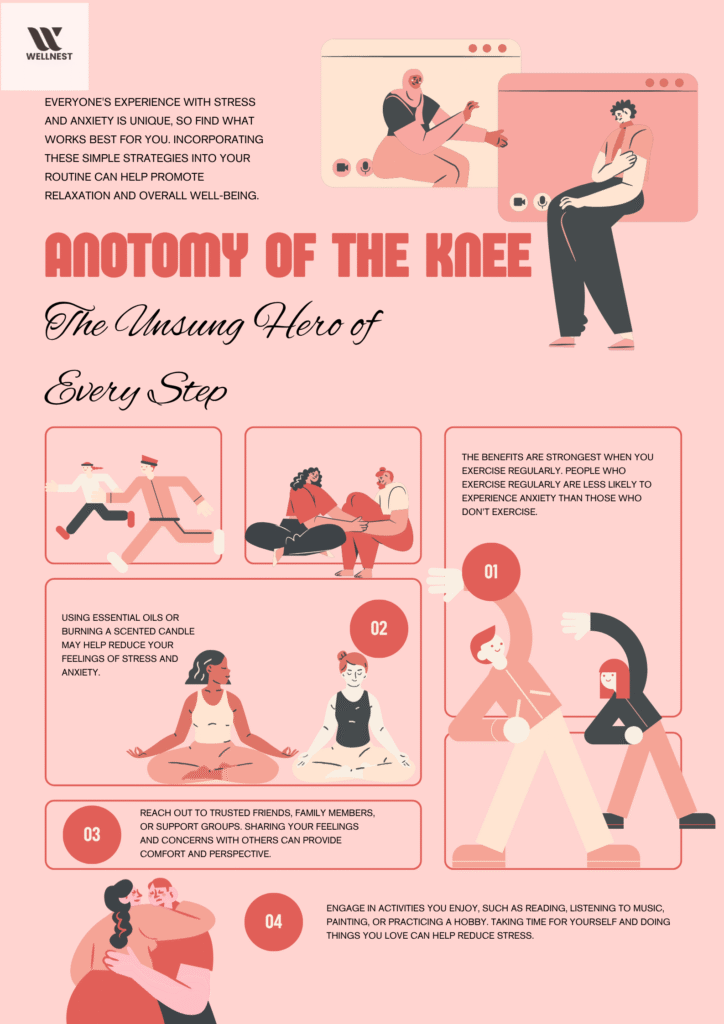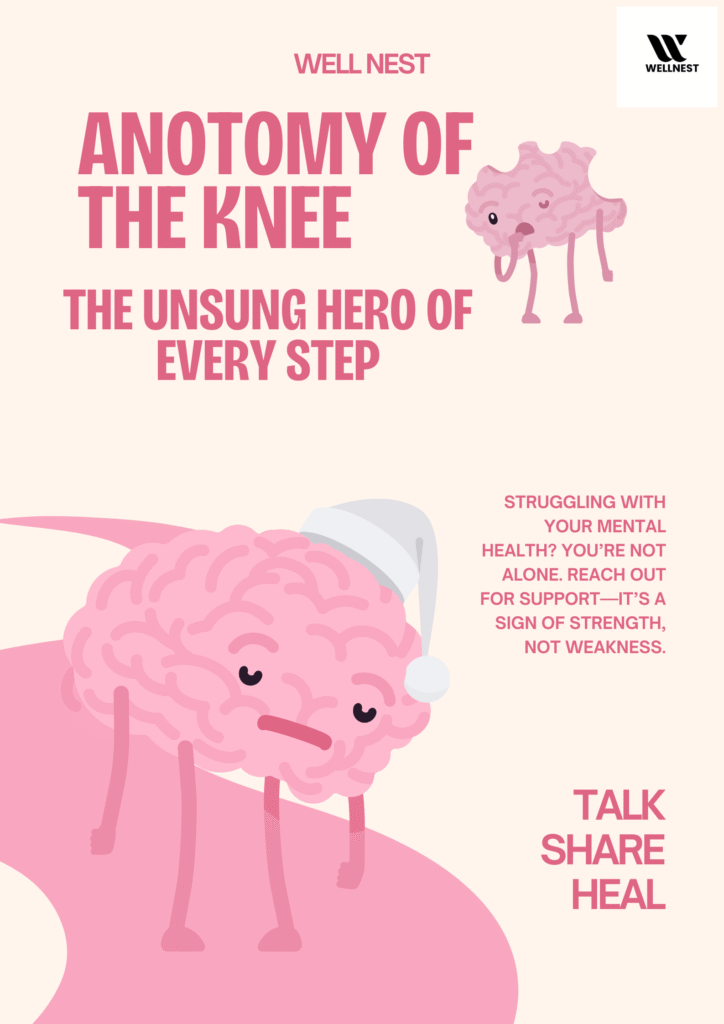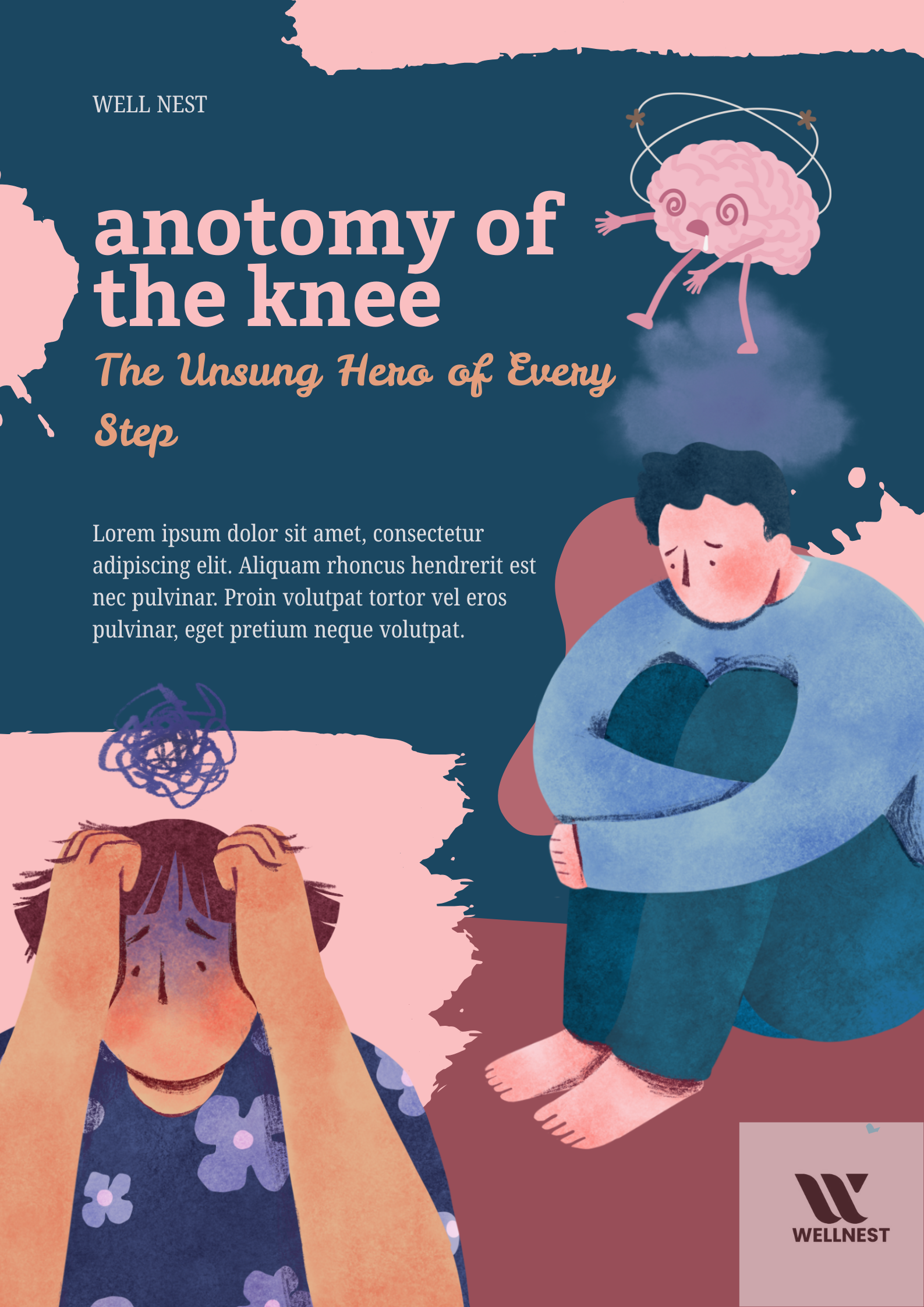Have you ever asked yourself just how your knee joint makes it possible for you to walk, squat, and jump? I am here to tell you that the anatomy of the knee is more interesting than one might think — it is the epitome of structure and motion.
Whether you’re working on a presentation, trying to improve your understanding prior to a sports recovery, or simply curious about the intricate design of your body, this guide covers everything about your knee in simple, informal language. Video Overview for Visual Learners:
Anatomy of the Knee PPT If you are a visual learner
An Anatomy of the Knee PPT is a useful tool. Some structures, such as the layout of the bones, ligaments, and muscles, can be explained visually. Most powerpoints will consist of diagrams that explain the following:
The knee joint formed by the femur, tibia, and patella
Ligament connections, such as the ACL and MCL
The menisci that act as shock absorbers
Muscles and tendons that are responsible for movement
Pro tip: When studying, use color-coded PPT diagrams to link the structures to the functions more quickly. The next part is available:.
Anatomy of the Knee PDF – Study Resource and Reference
An Anatomy of the Knee PDF is available for free or available in medical libraries or from teaching platforms such as Kenhub and TeachMeAnatomy. These can be utilized as a reference aid in offline form and may contain:;
Labeled Diagrams;
Movement Mechanics;
Common Injuries;
Clinical Correlations.
A decent Anatomy of the Knee PDF might occasionally summarize on one page what would otherwise take hours for learners to memorize from a book.

Anatomy of the Knee Bones – The Skeletal Framework
In reality, the bones of the whole knee joint establish the entire system’s foundation. There are three main bones and one supporting bone:
Femur – the upper thigh bone which forms the top of the joint.
Tibia – the shin bone that holds most of your body weight.
Patella – the kneecap that also acts like a pulley mechanism for the leg muscles.
Fibula – a smaller bone that runs parallel to the tibia and supports the ligament attachment.
Without this strong framework, we would not be able to stand, walk, or run.
Anatomy of the Knee Ligaments, the Stabilizing Straps.
The knee ligaments are the main support system that holds virtually all these bones together and keeps the joint stable during all movements.
The four major ligaments are:
Anterior Cruciate Ligament prevents the tibia from sliding or gliding forward or backward.
Posterior Cruciate Ligament prevents the tibia from sliding gliding or gliding backwards.
Medial Collateral Ligament MCLFor
MCL prevents the knee from bending medial i.e. inwards. lateral collateral ligament LCL For
LCL; prevents the knee from bending lateral or i.e. outwards.
They form a stability system that prevents sideways or twisting motion.
The muscles of the knee are responsible for motion, control, and shock absorption.
In short, the knee features:
extensors that straighten the knee, such as quadriceps femoris group – made of rectus femoris, vastus lateralis, vastus medialis, vastus intermedius;
flexors that bend the knee, like
Hamstrings – biceps femoris, semitendinosus, semimembranosus;
And sartorius, gracilis, and popliteus, which help in rotation and control.
Strong muscles are natural “brace” helping to protect your ligaments and cartilage against being overloaded.
Anatomy of the back of the knee is also hidden but potent.
Even though the popliteal region on the back of the knee may look simple, it hides the most essential structures:
popliteal artery and vein supplying blood to the leg;
And tibial and common fibular nerves.
Muscles popliteal semimembranosus biceps femoris fossa Semimembranosus and biceps femoris muscles form the fossa’s borders and may result in
Pain in the back of the knee due to problems such as baker’s cysts, hamstring strains, or vascular tension.
Anatomy of Left Knee: Symmetry and Variations
The left knee is structurally identical to the right, but there may be minor differences in muscle dominance or alignment based on handedness and athletic patterns.
For example, Very Few Surgeons Had Experienced Length-different Vastii;
Left-dominant individuals often exhibit increased activity in the vastus medialis on that side,
And slight shifts in alignment influence posture and load balance.
Nonetheless, regular stretching and bilateral strength training are critical for maintaining equal knee health.

Anatomy of Right Knee: Functional Mirror
The right knee has the same ligament, bone, and muscle structures as the left knee. While the meniscal variability shows small differences in wear pattern, size, and physiology Imbalance in joint loading – how you load your joints between sides depends on your daily activities – driving, sports stance, and work posture
If your right knee experiences repeated stiffness, check your anatomy – asymmetry means imbalanced mechanical function
Knee movement and function – simple and to the point:
Flexion and extension accompanied by Medial rotation and lateral rotation.
The “screw-home” mechanism – locking the joint in full extension, giving the necessary stability while standing and loading it
| Flexion | Hamstrings, sartorius, gracilis, popliteus |
| Extension | Quadriceps femoris |
| Medial rotation | Semitendinosus, semimembranosus, popliteus |
| Lateral rotation | Biceps femoris |
Most common knee injuries and disorders:
ACL tear – twisting, sudden stop
Meniscus tear – deep squats, sharp turns
Patellar tendinitis – “jumper’s knee”
Bursitis – prolonged kneeling
Terrible triad injury – ACL, MCL, medial meniscus injury
If your knee swells and hurts persistently, see a doctor and do not return to high-impact activity immediately.
The process of caring for your knees Step-by-step:
Warm-up before exercise
Stretch your hamstrings quads daily
Use proper footwear with support.
Strengthen core and hip muscle groups needed for proper alignment.
Avoid twisting on a planted foot.
Maintain proper body weight.
Although understanding the anotomy of the knee might seem unnecessary
it is actually useful. Your weight rests on this hinge joint and allows you to move around and keep stable.
